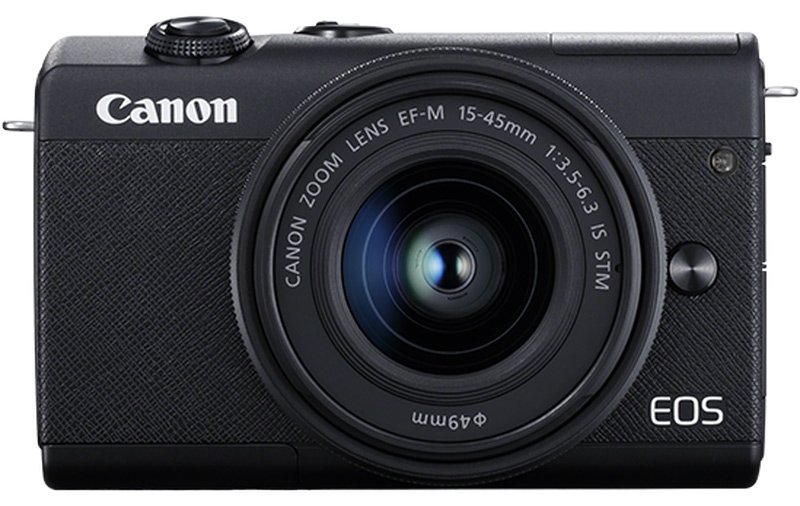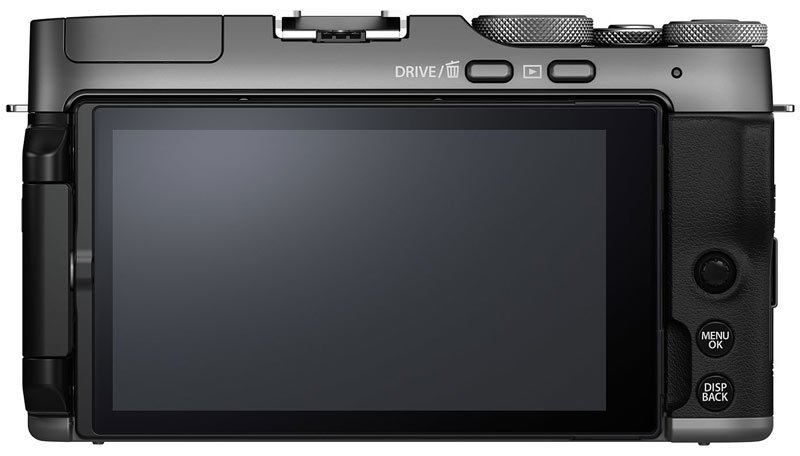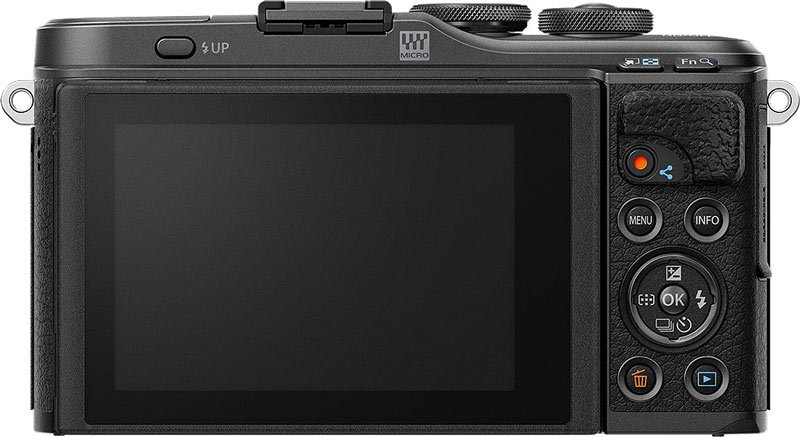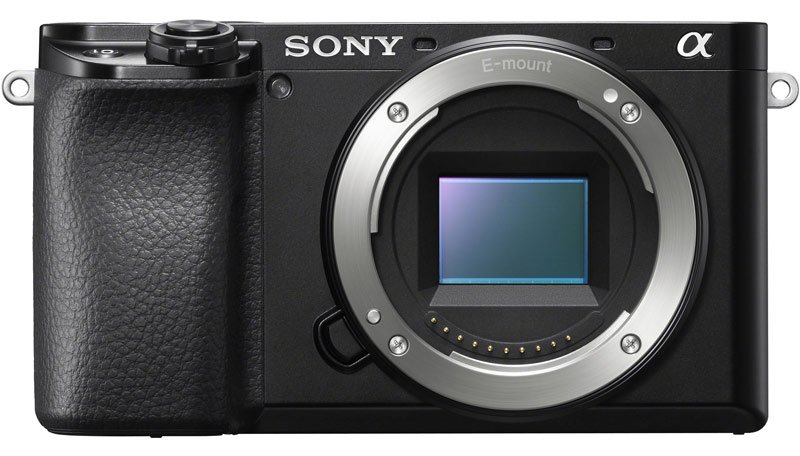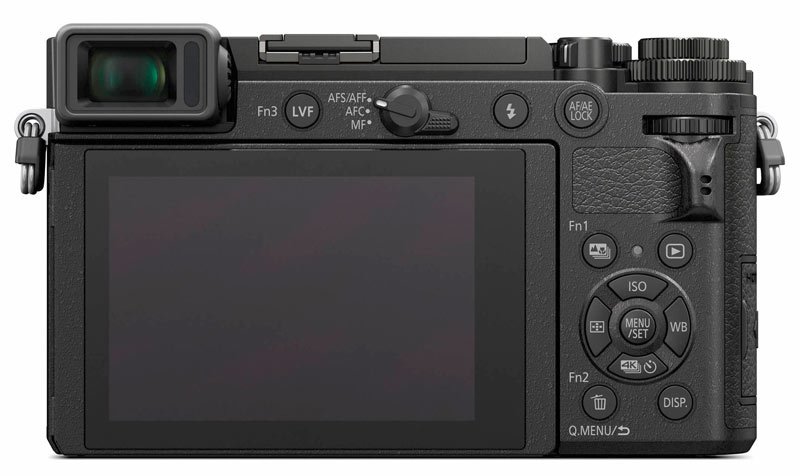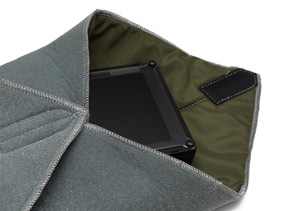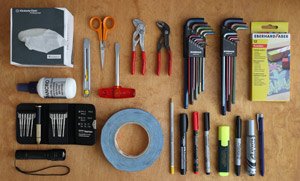
If you are looking to travel light, there’s nothing better than a nice, compact, light camera to accompany you. Anyone who has traveled with a big, bulky DSLR can attest to the inconveniences hefty gear can cause. Apart from drawing attention, big cameras can detract you from experiencing the locations and atmosphere. Of course, if you are looking for top-notch performance, ergonomics and ruggedness, there’s nothing better than the big brutes. However, if you are not on a dedicated photography trip big cameras are hardly worth the hassle. If you are traveling to experience different cultures and places, you might want to consider scaling down.
Current advances in the mirrorless sector have brought us pocketable cameras more powerful than ever before. As you will see in the list below, there are now cameras providing amazing functionality and quality while weighing in at a fraction of a single SLR lens. Whether you are backpacking through Nepal or strolling the streets of New York, an unobtrusive, light, pocketable camera can be a godsend. If you are flying anywhere, the ever-tightening carry-on weight regulations make every gram count.
Let’s have a look at which models make the cut for the best mirrorless camera for travel this year!
Canon EOS M200
At just 299 grams (0.66 lb / 10.55 oz, body including memory card & battery) the M200 is Canon’s lightest mirrorless camera and the lightest in our line-up. The slim polycarbonate body measures just 108.2 x 67.1 x 35.1mm (4.25 x 2.64 x 1.38″) but packs quite a punch. With an impressive 24.1 megapixel APS-C sensor, fast Dual Pixel autofocus and 4K video recording the M200 is a pocketable powerhouse. It truly is one of the best mirrorless cameras for travel currently on the market.
Paired with the stellar EF-M 22mm f/2 pancake prime (105 grams / 3.7 oz) the whole package weighs just over 400 grams or 14.1 oz. It is the most lightweight setup in our line-up and is a joy to use. You’d be hard-pressed to find a better quality to weight ratio in another camera combo. Unfortunately, Canon only seems to ship the M200 in a kit with the EF-M 15-45mm f/3.5-6.3 IS STM lens, so you’ll have to get the 22mm separately.
When looking at a lightweight camera kit, you have to look at the whole package rather than just the camera body. One overlooked extra that we particularly like in this camera is the USB charging. This means that you can forego bulky chargers and just charge the battery in the camera with your phone charger. Furthermore, you can charge on the go with any USB power bank, in a car or even with a solar panel.

The lighter weight of the M200 does come with certain compromises that advanced users might have to consider. Like the original EOS M and the M100 to follow it, the M200 is scarce on the external controls. With only 6 buttons, a 4-way controller and two dials, the control layout is minimalist but adequate. While this is fine if you mostly stick with one shooting mode, power users might find it a little limiting.
If you want a bit more control ergonomics you might want to consider the M200‘s big brother, the Canon EOS M6 Mark II. Significantly heavier at 408 grams (0.90 lb / 14.39 oz), the M6II does come with a lot more dedicated controls and a newly developed 33MP APS-C sensor.
Canon EOS M200 Technical Specs
| Image sensor | 24.1 MP APS-C (22.3 x 14.9mm CMOS) EOS integrated cleaning system |
| Lens mount | EF-M (EF and EF-S lenses compatible via Mount adapter EF-EOS M) |
| Shutter | 30 – 1/4000 sec in 1/3 increments Vertical-travel mechanical focal-plane shutter, electronically controlled at all speeds |
| Monitor | 3.0” (7.5 cm) Touchscreen LCD (TFT) 3:2 aspect ratio. Approx. 1,040,000 dots. Electrostatic capacitive type. Tilting approx 180° upward |
| Viewfinder | none |
| Flash | Built-in Flash: GN 5 (ISO 100, meters) Maximum coverage at approx. 15mm (35mm equivalent: approx. 24mm) HotShoe: no PC Terminal: no |
| Video | 4K – 3840 x 2160 (23.98, 25 fps) Full HD – 1920 x 1080 (59.94, 50, 29.97, 25fps) HD – 1280 x 720 (119.9, 100, 59.94, 50 fps) MP4 [Video: MPEG-4 AVC/H.264, Audio: MPEG-4 AAC] |
| Size / Weight | 108.2 x 67.1 x 35.1mm (4.25 x 2.64 x 1.38″) 299 grams (0.66 lb / 10.55 oz, body including memory card & battery) |
| Storage | SD, SDHC, SDXC (UHS-I compatible) |
| Power | 1 x Rechargeable Li-ion Battery LP-E12 Battery life approx. 315 shots (conforms to CIPA) USB Micro-B Charging |
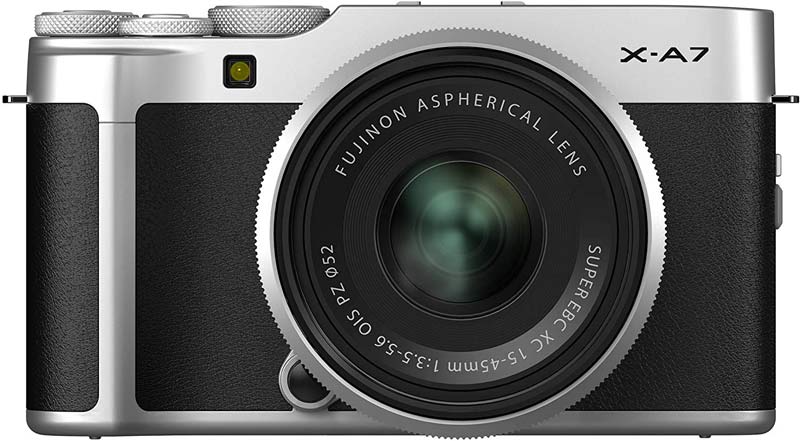
Fujifilm X-A7
The X-A7 is Fujifilm’s latest entry-level mirrorless and also the company’s lightest mirrorless camera at just 320 grams (0.71 lb / 11.29 oz) including card and battery. With an all-new copper wired 24.2 MP sensor, the model promises lower noise and faster readouts than the X-A5. Autofocus is improved with 117 phase-detection autofocus points, and the ISO range spans from 100 to 51,000. 4K 30p video recording is supported, and the camera includes a 2.5mm mic in for better audio.
Like the Canon M200, the Fuji X-A7 also supports USB charging, freeing you up from carrying a dedicated battery charger. The rear side of the camera is dominated by the largest screen on any camera in this line-up, a fully articulated 3.5″ touchscreen LCD with 2,760K dots.
Like the rest of the cameras in this class, Fujifilm only ships the X-A7 in a kit with the XC 15-45mm f/3.5-5.6 OIS PZ lens. Far from the most compact pair, if you are concerned with lightweight you need to look into pancake lenses. Pairing the X-A7 with the 116 gram Fujinon 18mm/f2 pancake lens results in a nice, compact 436 gram package.
Fujifilm X-A7 Technical Specs
| Image sensor | 24.2 MP APS-C (23.5 x 15.7mm CMOS with primary color filter) Ultra Sonic Vibration cleaning system |
| Lens mount | X mount |
| Shutter | Mechanical shutter: 4 sec. to 1/4000 sec. (P mode), 30 sec. to 1/4000 sec.(Other modes) Bulb mode(up to 60 min) Electronic shutter: 4 sec. to 1/32000 sec. (P mode), 30 sec. to 1/32000 sec (Other modes) Bulb mode(up to 60 min) Flash sync: 1/180 sec. or slower |
| Monitor | 3.5” (8.9 cm) Touchscreen LCD (TFT) 16:9 aspect ratio. Approx. 2,760,000 dots. Electrostatic capacitive type. Vari-angle type |
| Viewfinder | none |
| Flash | Built-in Flash: GN 4 (ISO 100, meters) HotShoe: yes PC Terminal: no |
| Video | 4K (3840 x 2160): 29.97P/25P/24P/23.98P Continuous recording: up to 15 min. Full HD(1920 x 1080): 59.94P/50P/29.97P/25P/24P/23.98P Continuous recording: up to 30 min. HD(1280 x 720): 59.94P/50P/29.97P/25P/24P/23.98P Continuous recording: up to 30 min. 1:1 Full HD(1080 x 1080): 59.94P/50P/29.97P/25P/24P/23.98P Continuous recording: up to 30 min. 1:1 HD(720 x 720): 59.94P/50P/29.97P/25P/24P/23.98P Continuous recording: up to 30 min. High Speed Movie(1280×720): 1.6x / 2x / 3.3x / 4x Movie File Format: MPEG-4 Movie Video Compression: H.264 Audio: Linear PCM Stereo |
| Size / Weight | 119 x 38 x 41 mm (4.69 x 1.5 x 1.61″) 320 grams (0.71 lb / 11.29 oz, body including memory card & battery) |
| Storage | SD Card (-2GB) / SDHC Card (-32GB) / SDXC Card (-256GB) UHS-I |
| Power | 1 x Rechargeable Li-ion Battery NP-W126S Battery life approx. 270 shots (conforms to CIPA) USB Type-C Charging |

Olympus PEN E-PL10
Next up is Olympus’ new entry-level offer, the PEN E-PL10. A descendant of one of the key cameras of the mirrorless revolution, the new PEN has big shoes to fill. The camera stays true to the original PEN design ethos, and the slim 117 x 68 x 39 mm (4.61 x 2.68 x 1.54″) body weighs in at just 380 grams (0.84 lb / 13.40 oz). With a decent control layout, tilting screen and nice ergonomics, it makes for a competent pocketable snapper.
However, with a modest 16 MP 4/3 sensor, the PEN is not the most exciting camera in our line-up, and while certainly capable it does not have much going on for it. Perhaps the camera’s biggest selling point is the sensor-shift image stabilization, a feature only found on it’s MFT cousin, the Panasonic GX9. The E-PL10 is the only camera in this list that does not support charging over USB, so you will have to be traveling with the included mains battery charger.
Like almost all the other cameras in this line-up, Olympus only seems to ship the PEN E-PL10 in a kit with the M. Zuiko Digital 14-42mm F3. 5-5. 6 EZ lens. However, if you are going for lightweight portability, you will be needing a pancake lens. Reviewers are unanimous that the best pancake lens for the micro four-thirds mount is the Panasonic Lumix G II 20mm f/1.7. Weighing in at 87 grams (3.07oz), it’s a perfect match for the lightweight PEN E-PL10. Together, the set clocks in at 467 grams or almost exactly a pound.
The MFT system offers even lighter lenses if you are willing to live with their limitations. The cheap and cheerful Olympus 15mm f/8.0 Body Cap lens is a mere 22 g (0.8 oz) for a total package weight of 402 grams, right in Canon M200 territory. Not offering the best of image quality out there and with a rather limiting f/8, it’s weight makes it the ultimate light camera companion.
For a quirkier view, the Olympus Fisheye Body Cap 9mm f/8 lens will add a mere 30 grams for a total weight of just 410 grams (0.9 lb / 14.46 oz). The Panasonic Lumix 14mm f2.5 II (55 grams) and the Olympus M.Zuiko Digital 17mm f/2.8 (71 grams) are other lightweight options.
Olympus PEN E-PL10 Technical Specs
| Image sensor | 16 MP Four Thirds (17.3 x 13mm 4/3 Live MOS sensor) Supersonic Wave Filter cleaning system <3.5 stop In-Body Sensor-shift image stabilization |
| Lens mount | MFT (Micro Four Thirds) |
| Shutter | Mechanical shutter: 1/4000 – 60 sec. (adjustable in 1/3 EV steps) Live Bulb/Live Time: Max. 30 min. (selectable in menu settings, with 8-min. default setting) Live composite: Max. 3 hrs. Electronic first curtain shutter: 1/320 – 60 sec. Electronic shutter: 1/16000 – 60 sec. |
| Monitor | 3.0” (7.5 cm) Touchscreen LCD (TFT) 3:2 aspect ratio. Approx. 1,037,000 dots. Electrostatic capacitive type. Upward tilting: Up to approx. 80 degrees Downward tilting: Up to approx. 180 degrees |
| Viewfinder | none |
| Flash | Built-in Flash: GN 5.4 (ISO 100, meters) HotShoe: yes PC Terminal: no |
| Video | Recording formats: MOV (MPEG – 4AVC / H.264) Recording modes: 3840 x 2160 (4K) / 30p, 25p, 24p / IPB (approx. 102 Mbps) 1920 x 1080 (FHD) / 30p, 25p, 24p / IPB (SF, F, N) 1920 x 1080 (FHD) / 60p, 50p / IPB (SF, F, N) 1280 x 720 (HD) / 30p, 25p, 24p / IPB (SF, F, N) |
| Size / Weight | 117 x 68 x 39 mm (4.61 x 2.68 x 1.54″) 380 grams (0.84 lb / 13.40 oz, body including memory card & battery) |
| Storage | SD memory card (SDHC, SDXC, UHS-I compatible) |
| Power | 1 x Rechargeable Li-ion Battery BLS-50 Battery life approx. 350 shots (conforms to CIPA) |
Sony A6100
The A6100 is Sony’s 2019 entry level model offering replacing the 5 year old A6000. The attractive price point of this camera this does not mean it’s not a top notch mirrorless travel partner. Weighing in at 396 grams (0.87 lb / 13.97 oz) the A6100 is a bit on the heavy end of our selection.
Like the Canon M200 and the Fujifilm X-A7, the Sony A6100 also supports USB charging. In fact, Sony has taken this a step further by not including a standalone battery charger with the camera at all. Like a mobile phone, the A6100 only includes an AC to USB adapter and a USB cable. While perfect for lightweight travel, this can be a drawback for some. If you want to use more than one battery and like charging one while shooting with the other, you might want to invest in a separate USB charger like this one.
Unlike Canon, Fujifilm, and Olympus, Sony is not as pushy with their kit lenses, so you can get the A6100 as a body only. Going lightweight, you can slap the Sony 20mm f/2.8 pancake lens on it. At only 69 grams (2.4 oz) the tiny lens brings the total package weight to a nice 474 grams. This is almost exactly one pound (1.04 lb / 16.7 oz) and, coincidentally, a tiny bit over the weight of the PEN E/Lumix G 20mm combo. While significantly heavier than the feathery 400 grams of the M200/EF-M22 combo, it’s still a respectable achievement.
Sony A6100 Technical Specs
| Image sensor | 24 MP APS-C (23.5 x 15.6 mm CMOS) Integrated ultrasonic cleaning system |
| Lens mount | Sony E |
| Shutter | 30 – 1/4000 sec in 1/3 increments Vertical-travel mechanical focal-plane shutter Silent Shooting electronic shutter mode |
| Monitor | 3.0” (7.5 cm) Touchscreen LCD (TFT) 3:2 aspect ratio. Approx. 921,600 dots. Electrostatic capacitive type. Tilting approx 180° upward |
| Viewfinder | Electronic, 100% coverage 1,440,000 dots 1.07× magnification |
| Flash | Built-in Flash: GN 6 (ISO 100, meters) HotShoe: yes PC Terminal: no |
| Video | Recording formats: MPEG-4, AVCHD, XAVC S, H.264 Recording modes: XAVC S 4K (3840 x 2160) – 30p/100M; 24p/100M; 30p/60M; 24p/60M; XAVC S HD (1920 x 1080) – 120p/100M; 120p/60M; 60p/50M; 30p/50M; 24p/50M; 60p/25M; 30p/16M; AVCHD (1920 x 1080) – 60i/24M/FX; 60i/17M/FH; |
| Size / Weight | 120 x 67 x 59 mm (4.72 x 2.64 x 2.32″) 396 grams (0.87 lb / 13.97 oz, body including memory card & battery) |
| Storage | SD/SDHC/SDXC + Memory Stick Pro Duo |
| Power | 1 x NP-FW50 Rechargeable Li-ion Battery Battery life approx. 420 shots (conforms to CIPA) Micro USB Charging |
Sigma fp
As the world’s lightest and smallest full-frame mirrorless camera, the Sigma fp is something of an honorary inclusion in the list. Weighing just 396 grams (0.87 lb / 13.97 oz) the fp is Sigma’s technological tour-de-force. The number gets even more impressive when you handle the solid aluminum body of the camera and consider it’s capabilities. The huge 24.6MP back-illuminated CMOS sensor gives the camera 12.5 stops of dynamic range and the absence of a low pass filter ensures spectacular detail.
The fp is especially geared towards video production with some pretty advanced specs. It can record 8-bit CinemaDNG 4K video at 24 fps internally to an SD UHS-II card or 12-bit CinemaDNG 4K video at 24 fps to an external SSD via USB 3.0 Type-C. The camera has a dedicated button to switch between cine and still mode and features a unique director’s viewfinder mode.
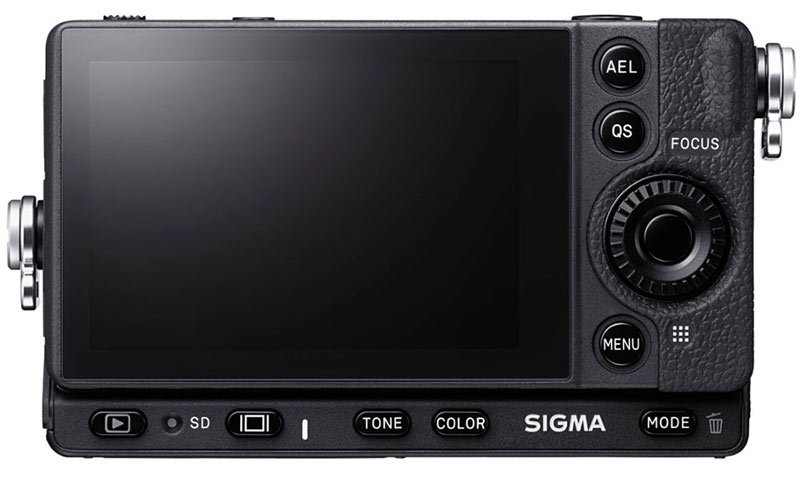
The large sensor of the fp makes creating a pancake lens for it a challenge. For now, the lens that gets closest is the Sigma 45mm f/2.8 DG DN Contemporary L-Mount lens which you can buy with the fp as a bundle. At 215 grams (7.58 oz) it’s about twice as heavy as most of the other lenses we’ve discussed above, but it does cover a sensor over 2.5 times larger.
Nevertheless, the combination of Sigma fp and the 45 f/2.8 clocks in at just 637 grams (1.4 lb / 22.47 oz), a record-breaking number for a full-frame camera. The relatively new L mount, backed up by heavyweights Panasonic and Leica, is just picking up speed, and there’s a lot of exciting lenses to come in the following months. If you are looking for the most compact full-frame mirrorless travel camera, look no further.
As a maverick product, the fp is not without its quirks and drawbacks. For example, the electronic shutter limits maximum flash sync at only 1/30 sec. Going to 14-bit mode brings this down even lower to 1/15 sec. Like the Canon M200, the fp’s controls are minimalistic but well thought out. The 3.15″ LCD is fixed.
Sigma fp Technical Specs
| Image sensor | 24.6 MP 35mm Full-Frame (35.9mm x 23.10mm) Back-illuminated Bayer CMOS sensor |
| Lens mount | L-Mount |
| Shutter | 30 – 1/8,000 sec. in 1/3 increments Flash sync: 1/30 sec. or 1/15 sec in 14-bit mode Bulb (5 minutes max) Electronic shutter only |
| Monitor | 3.15” (8 cm) Fixed Touchscreen LCD (TFT) 3:2 aspect ratio. Approx. 2,100,000 dots. Electrostatic capacitive type. |
| Viewfinder | none |
| Flash | Built-in Flash: no HotShoe: yes (with Hot Shoe Unit HU-11, included) PC Terminal: no |
| Video | Recording formats: CinemaDNG(8bit / 10bit/ 12bit) / MOV:H.264 (ALL-I/ GOP) Recording modes: UHD 4K (3,840×2,160) – 23.98p, 25p, 29.97p FHD (1,920×1,080) – 23.98p, 25p, 29.97p, 59.94p, 100p, 119.88p |
| Size / Weight | 113 x 70 x 45 mm (4.45 x 2.76 x 1.77″) 422 grams (0.93 lb / 14.89 oz, body including memory card & battery) |
| Storage | SD / SDHC / SDXC memory card(UHS-Ⅱ supported) / Portable SSD (USB 3.0 connection, USB bus power supported) |
| Power | 1 x BP-51 Rechargeable Li-ion Battery Battery life approx. 280 shots (conforms to CIPA) USB Type-C Charging |
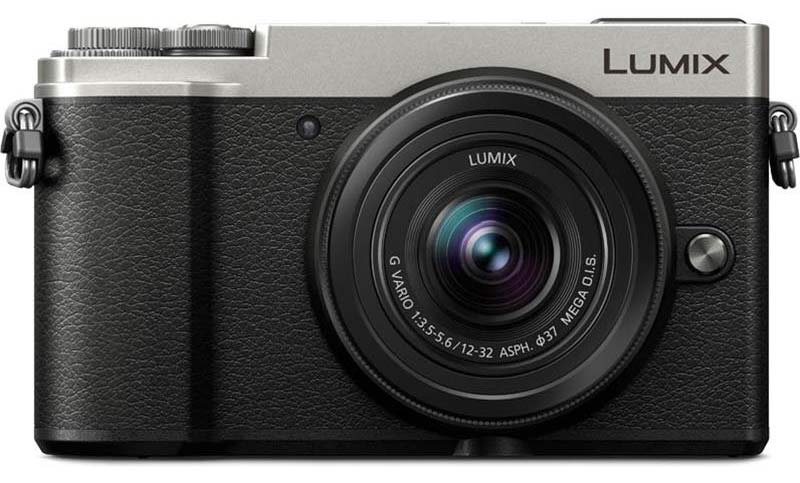
Panasonic Lumix DC-GX9
At a mere 450 grams (0.99 lb / 15.84 oz, body with battery and memory card) the Panasonic DC-GX9 is the heaviest camera in this selection. Released in 2018, it’s also the oldest model we are featuring but it’s still Panasonic’s lightest mirrorless camera on the US market. It’s little brother, the Lumix DC-GF10 is a real light camera contender weighing just 270 grams (0.60 lb / 9.52 oz). Unfortunately, the camera is not available outside Asia, although rumor has it might be coming to the US under the GX950 model name.
Like all the cameras in our line-up, with the exception of the Olympus E-PL10, the Lumix DC-GX9 supports USB charging. If you are invested in the Micro Four Thirds system and you are looking for a USB chargeable camera, the GX9 might be your shot.
Like the Canon, Olympus, and Fuji, the Lumix GX9 can only be bought as a kit with the Lumix G Vario 12-60mm f/3.5-5.6 ASPH. POWER O.I.S. Lens. You can get separated kits body-only deals on Amazon but it’s not a Panasonic sanctioned practice. Paired with the highly acclaimed Panasonic Lumix G II 20mm f/1.7 pancake lens, the DC-GX9 gets seriously pocketable. At 87 grams (3.07oz) the lens does not add a lot to the package, bringing the total to 537 grams (1.18 lb / 18.94 oz).
While still over 30% heavier than our lightest combo, this is nothing to scoff at. If you are looking to lose a bit more heft, you can also try the Panasonic Lumix 14mm f2.5 II (55 grams) or the Olympus Fisheye Body Cap 9mm f/8 lens (30 grams).
Panasonic Lumix DC-GX9 Technical Specs
| Image sensor | 20.3 MP Four Thirds (17.3 x 13mm 4/3 Live MOS sensor) Supersonic Wave Filter cleaning system 5 axis <4 stop In-Body Sensor-shift image stabilization |
| Lens mount | MFT (Micro Four Thirds) |
| Shutter | Mechanical shutter: 60 sec. to 1/4000 sec. Bulb mode is possible with the “Image App” remote control via Bluetooth, max. 30 min Electronic shutter: 1 sec – 1/16,000 sec Motion picture: 1/25 sec – 1/16,000 sec Flash sync: 1/200 sec. or slower |
| Monitor | 3.0” (7.5 cm) Touchscreen LCD (TFT) 3:2 aspect ratio. Approx. 1,240,000 dots. Electrostatic capacitive type. Tilt upwards: 80° Tilt downwards: 45° |
| Viewfinder | Electronic, 100% coverage 2,760,000 dots 1.39× magnification |
| Flash | Built-in Flash: GN 4.2 (ISO 100, meters) HotShoe: yes PC Terminal: no |
| Video | Recording formats: MPEG-4, AVCHD, H.264 Recording modes: UHD 4K (3,840×2,160) – 4K/30p: 100Mbps / 4K/25p: 100Mbps/ 4K/24p: 100Mbps FHD (1,920×1,080) – FHD/60p: 28Mbps / FHD/50p: 28Mbps / FHD/30p: 20Mbps / FHD/25p: 20Mbps AVCHD FHD (1,920×1080) – FHD/50p: 28Mbps, 50p recording/FHD/50i: 17Mbps, 50i recording / FHD/25p: 24Mbps, 50i recording (sensor output is 25fps)/FHD/24p: 24Mbps, 24p recording HD (1,280×720) – HD/30p: 10Mbps / HD/25p: 10Mbps |
| Size / Weight | 124 x 72 x 47 mm (4.88 x 2.83 x 1.85″) 450g (0.99 lb / 15.84 oz, body including memory card & battery) |
| Storage | SD Memory Card, SDHC Memory Card, SDXC Memory Card/(Compatible with UHS-I UHS Speed Class 3 standard SDHC / SDXC Memory Cards) |
| Power | 1 x Rechargeable Li-ion Battery USB Charging |


